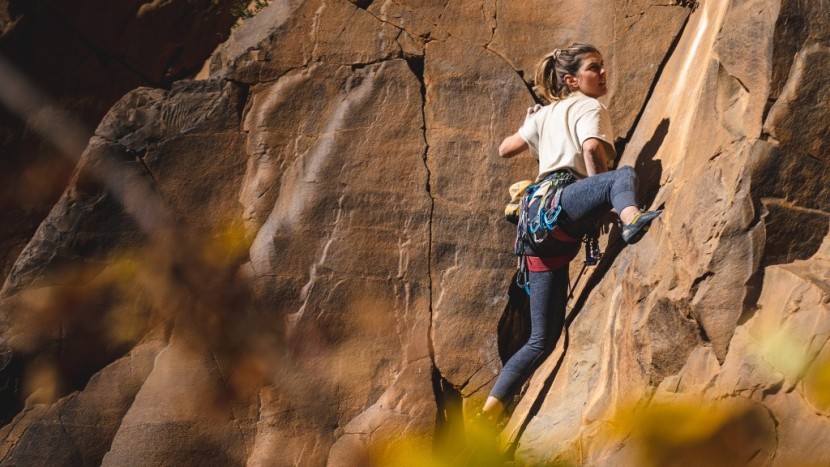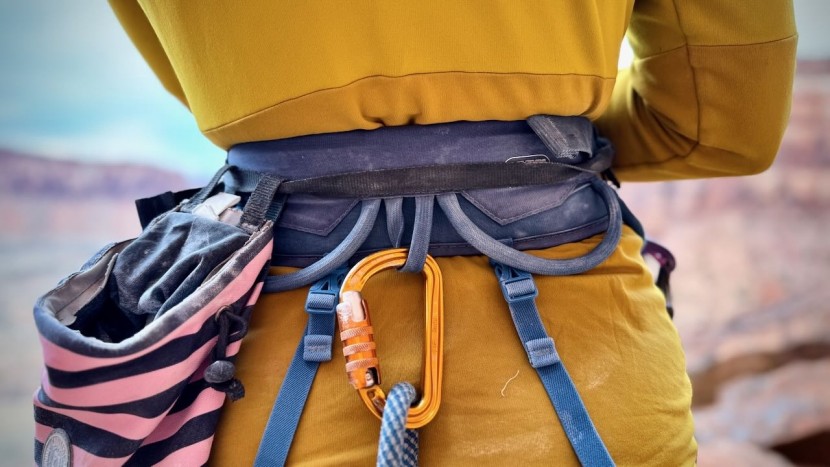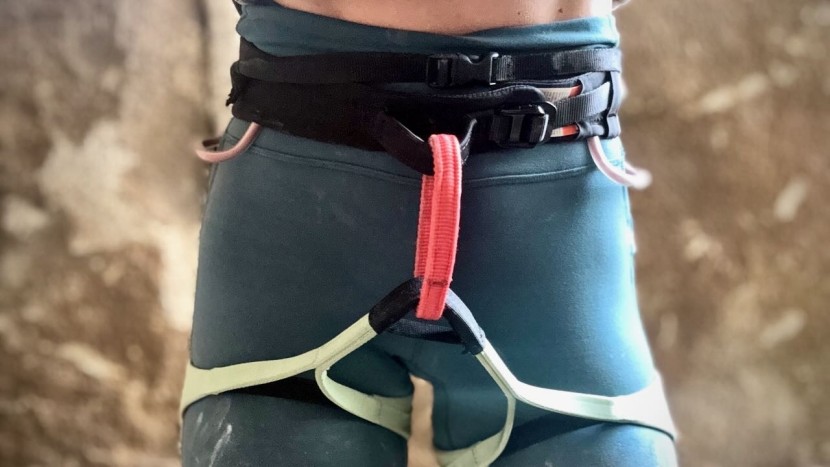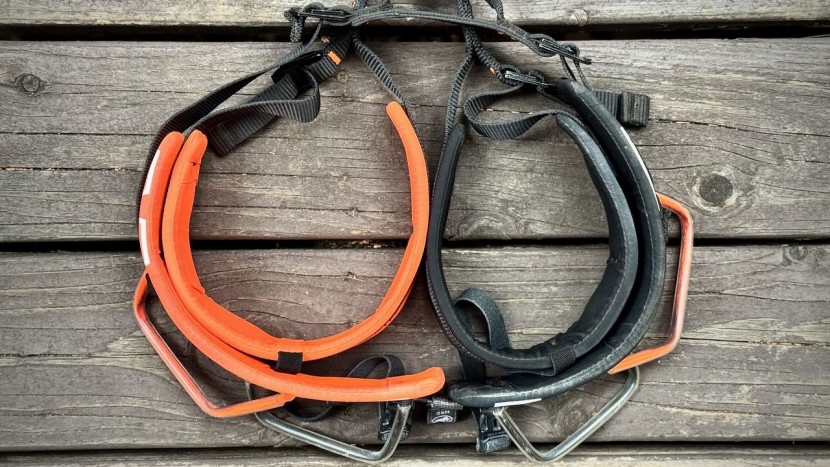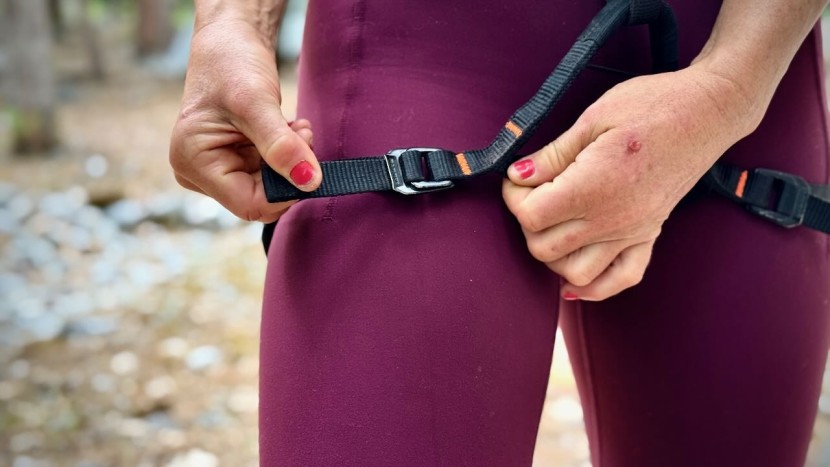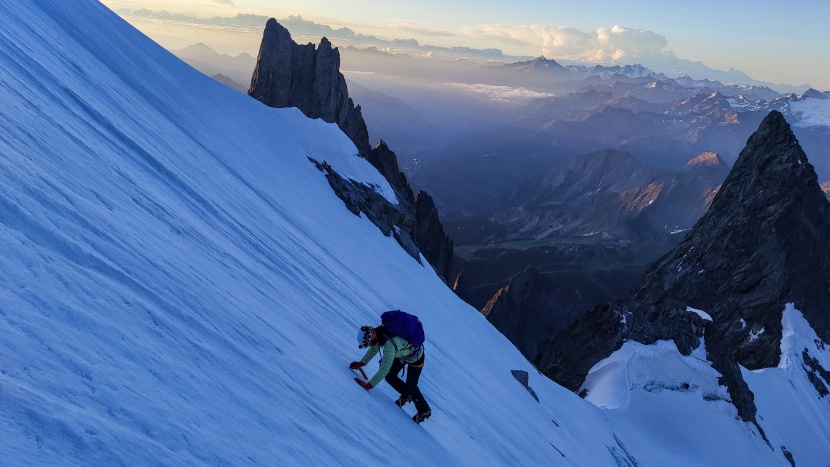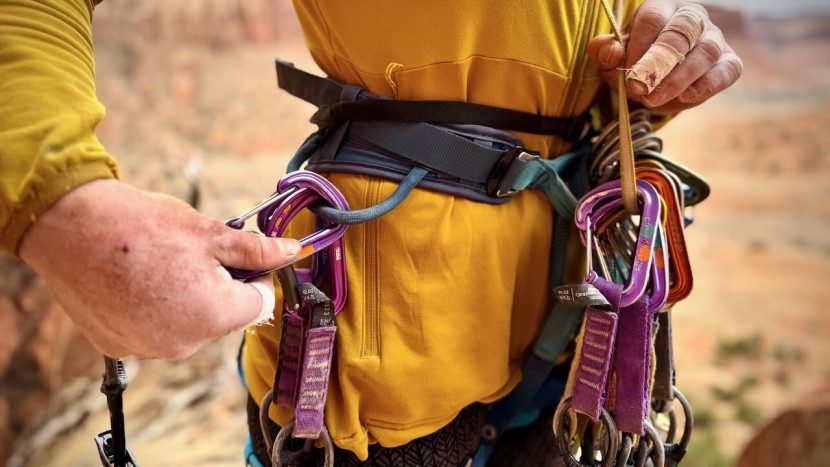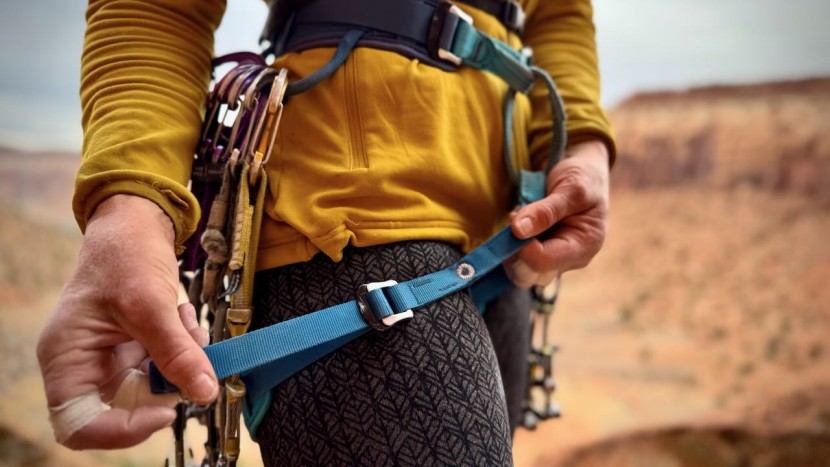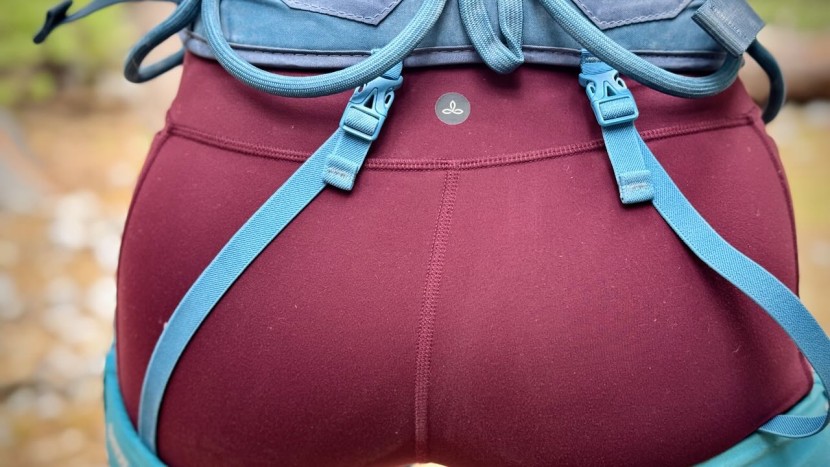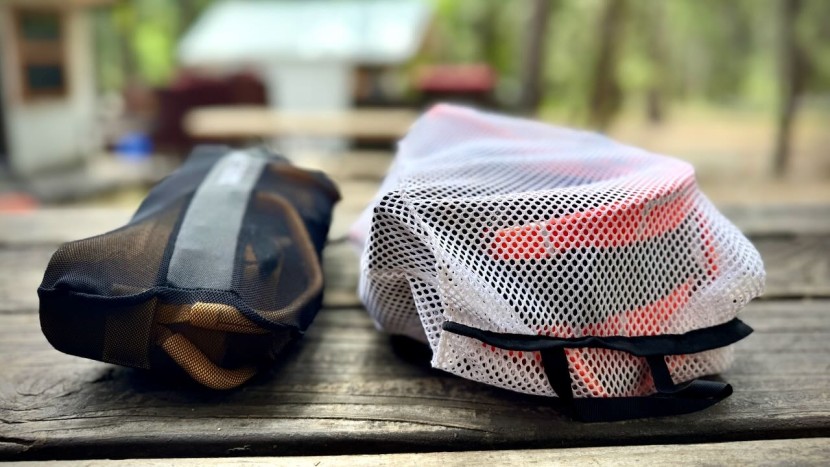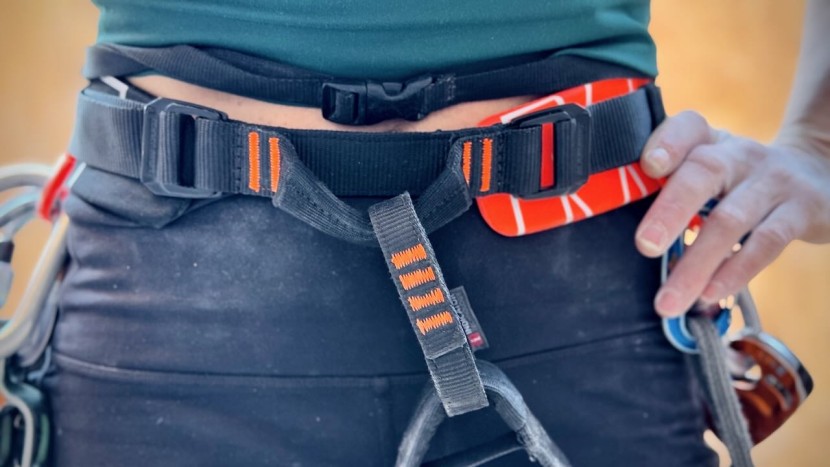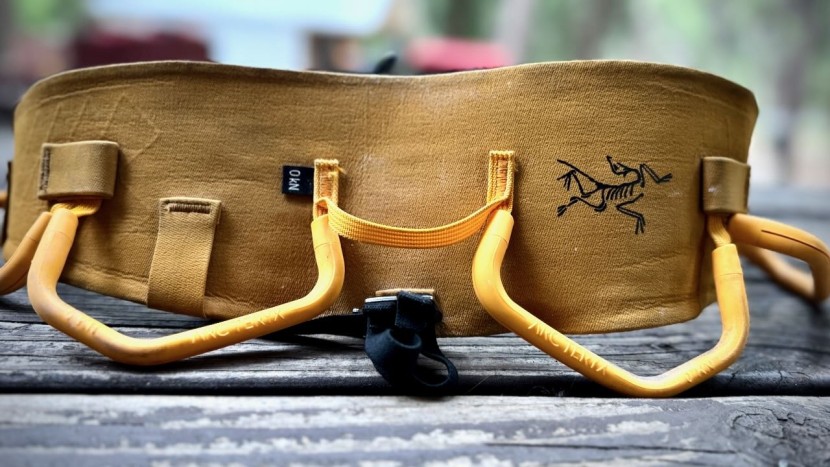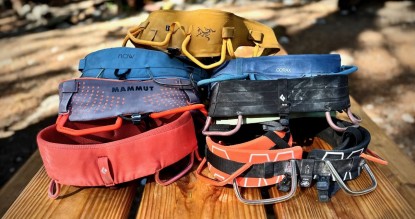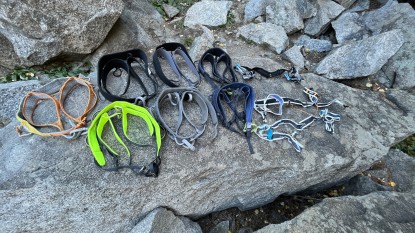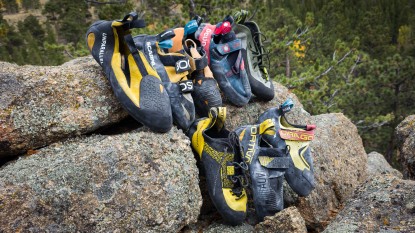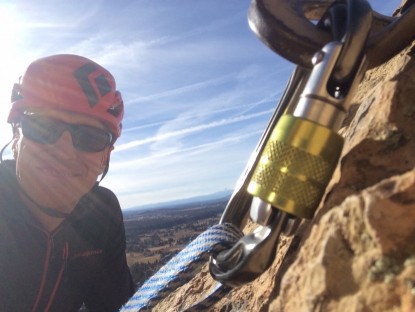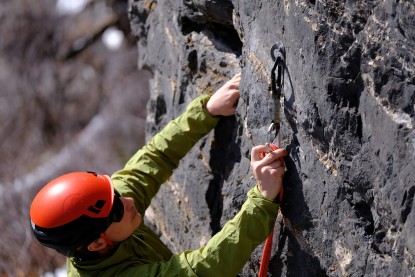Settling on the right harness takes some serious research and trial and error. This is likely one of the first purchases you'll make when getting into climbing and one that will have to be replaced fairly frequently throughout your climbing career. Whether you're sport climbing or multi-pitching, you'll be spending a lot of time in your harness, hanging, walking around at the crag, and climbing. It is essential to find a model that feels comfortable in all of these settings.
Women's Specific Climbing Harnesses
Of course, the first step with purchasing any women's specific model is making sure that this is a design feature you are looking for. It was not too long ago that such a thing as a “women's harness” didn't even exist, and we ladies had to suffer in uncomfortable models designed for a man's proportions. Finally, enough women were climbing (and complaining) that gear manufacturers began to deliver models suited for a woman's physique.
How are women different? First, the rise of our waist tends to be longer. There is more distance between where the leg loops sit and where the waist belt fits. Second, our legs are slightly larger relative to our waist when compared to men, and so our harnesses require different waist-to-leg ratios. Third, the angle that the hip bones sit at is different than a man's body and more variable. In fact, all of these measurements are highly variable in women and much more so than in men. Our testers, in general, prefer women's specific harnesses, mostly because of their higher rise and wider leg loops. It's worth trying on both men's and women's models to get a feel for both, especially if you're on the fence.
We measured a dozen different women with different body types and found that the majority had rise lengths of 7-8 inches, whether they were a petite 5'3" or a tall 5'9". About 1/4 had rise lengths of six inches and/or preferred to wear the waist belt more around their hips than their waist, and that measurement was also around 6 inches. To find out your rise length, measure from your pubic bone, or where the leg loops sit, to your natural waist, typically your belly button, or where you like to wear your waist belt. If you measure 7-8 inches, then you are with 75% of the women we surveyed, and you'll be happy with the women's versions from brands like Black Diamond, Mammut, Camp, and Arc'teryx. If you measure six inches or less, check out the models from Petzl, Mad Rock, and Edelrid, as their rise is a little shorter than the other manufacturers. Your other option with a shorter rise is to shop for men's or unisex models.
Why is rise even important, you might wonder? When the rise is too short or too long, not only will the harness fit poorly, but it will also be uncomfortable to hang in for long periods. A too-short rise will have you falling backward when hanging, and a too-long rise will pitch you forward. Women's specific climbing harnesses might also have curvier waist belts, which can be more comfortable on a female frame. Finally, they tend to come in brighter and often “girlier” colors, which you may or may not prefer. Ultimately, the best advice we can give is to try on several different male and female models from as many manufacturers as you can to find the one that will work for you best.
Sizing and Fit
Climbing harnesses typically come in four different sizes, from x-small to large. Some manufacturers are even making adjustable models that can fit a wide range of sizes within a single dual-adjust harness, from x-small to medium, or medium to x-large. Each manufacturer has their own idea as to what measurements constitute each size and will usually display that information on its website. When sizing, we recommend that you try on a harness first with the lightest clothing you would be climbing in, say a pair of leggings and a tank top for the gym or a hot day, and make sure that the waist belt can cinch down almost all the way. This will give you more room to wear layers underneath it on colder days. If you size it too small (even if the waist belt buckle closes), the gear loops will probably be off-center and hard to use. If you fall on the cusp between two sizes, we'd generally recommend sizing up for that reason.
Comfort
You could find a model that has all the extras you like and a super hi-tech design, but if it's uncomfortable to hang in, then what's the point? Some harnesses offer an excellent look and feel when climbing, hiking, and just sitting around at the crag, but when it came to actually hanging for an extended period of time, it's a different story. And the reality of climbing is that we spend a lot of time hanging in our harnesses, whether it's at hanging belays on a multi-pitch route or working a sport climb. Pay attention to the padding around the waistband and the leg loops, as well as the width of the loops. As you might expect, the more padding and the more surface area, the more comfortable. In one case, a thin tape design of the leg loops dug into the backs of our thighs, causing discomfort. However, the webbing technology beneath the surface can make a huge difference in how your weight is distributed, and some minimalist-style harnesses can actually be quite comfortable.
Always try to hang in a climbing harness before purchasing it. Most climbing gear shops should have a clip-in point that you can use to test it out. Sit in it for at least 10 minutes, and you'll know pretty quickly if you should buy it or not.
Leg Loops
Harnesses come with a wide variety of leg loop styles - ranging from fully fixed, to partially adjustable, to fully adjustable. Which style you prefer is a personal preference and also dictated by what style of climbing you tend to do most often. For some, an extra buckle and webbing flapping against the thigh or pressing into legs when chimneying can be annoying. On the flip side, a restricting leg loop can also be a total buzzkill. If you plan to use your harness for summer sport climbing, where you may be wearing only leggings or shorts, and for ice or alpine climbing in winter, where a few more layers will be added, an adjustable leg loop is key.
Additionally, as mentioned above, women come in a variety of sizes and leg width-to-waist variability. A fixed leg loop is great, but only if it fits you right. Ladies with larger legs relative to their waist size can have a difficult time finding a leg loop that fits, so an adjustable leg loop is essential.
In general, we found that Arc'teryx harnesses have the tightest fixed leg loops and only accommodate the skinniest of legs. Mammut and Black Diamond seem to have a bit more wiggle room in their leg loops. Many Black Diamond models have a trakFIT feature that allows a bit of adjustability within the fixed elastic leg loop. Harnesses with this feature are some of our favorites, since they allow for a bit of adjustment, without the added bulk of a large buckle.
Adjustable Leg Loop Pros and Cons
Gear Loops
There are several aspects of gear loops to consider, but the most important is their placement. If they are arranged on the waist belt for easy access, then you will be comfortable when climbing — whether leading or cleaning gear. While most sport climbers will mostly use the front gear loops, traditional climbers will need to have easy access to all four of them, particularly if racking their gear on their waist and not a separate gear sling. Our testers found the rear gear loops on some models to be so far back that they were almost impossible to reach, limiting our racking options. We like the gear loop placement on the Black Diamond models, as their loops are all further towards the front of the waist belt.
This often comes down to personal preference, but you should also look at the climb you are going to do. A gear sling will allow you to re-rack by size when cleaning and can be moved from one side of your body to another depending on the terrain, so if you need to squeeze your left side into a chimney, you can place the sling on your right. Carrying a full-size gear sling around is also extra weight and an extra piece of gear, so if you do like cleaning gear on a sling, or use one occasionally, one option is to use an alpine draw to collect gear when cleaning. This reduces extra gear and allows for versatility when you rack your gear on the route.
Another important thing to consider with gear loops is how easy they are to clip. Our testers found that loops coated in hard plastic hold their shape well and are very easy to clip. Our testers preferred the rigid loops that have a flexible attachment point on the waist belt, as is the case with the Arc'teryx models. They are easy to clip, and if you put a pack on over your harness, the gear loops fold down comfortably and don't push into your back. The Black Diamond models all have completely rigid gear loops that do not fit comfortably underneath a pack.
A final word on gear loops is that, unfortunately, for the most petite of us, there is often not enough room on the x-small-sized models for four gear loops. This can be frustrating, particularly when traditional climbing, as three gear loops don't always cut it space-wise. Options from Misty Mountain still manage to fit four loops on the waist belt and are a good option for a traddie lady.
Haul Loops
Climbing harnesses have many different options when it comes to haul loops in the back. Some models have only a small, p-cord style loop. Others have multiple loops and one rated to 12 kN (kiloNewton is a force rating that indicates how much force a piece of gear can withstand before failing). Arc'teryx has gone the opposite route, stating that their models have a 0 kN rating on both their haul loops and gear loops. Metolius engineers every component of their models to be full-strength, including the gear loops and haul loop. Even the leg loop elastic is rated to 6.6 kN. Regardless of the rating, we do like to have at least one or two clip-in points in the rear, particularly when trad climbing, for clipping our tag line, or shoes, or anchor system, etc.
Buckles
Nowadays, almost all climbing harnesses come with some form of a self-locking buckle. We like these buckles since they are easy to use, quicker to put on, and safer since you cannot forget to double back. Sometimes these buckles can feel like they loosen a bit over the course of the day, but all that is required is a little extra cinch before starting your next pitch. We prefer this feature whenever possible; luckily, most of the models in this updated review came with one.
Leg Loop Elastic Release
The ability to drop the leg loops on a climbing harness is a vital feature for most women. When nature calls, squirming out of your harness is cumbersome, or on a multi-pitch climb, simply impossible. All of the models that we tested have this feature, some with very easy buckles, and some with hook closures that are hard to reattach. One of our favorites was the Petzl snap buckle, which was easy to detach and re-attach one-handed. However, this buckle creates a pressure point on our backs when chimneying. The Black Diamond models have a separate attachment point for each leg loop, which is more cumbersome, but the hooks are small and low profile. If fussing with leg loop attachments bothers you, practice just pulling the elastic to the outside of your legs before dropping trou. Once you perfect this move, you will rarely need to detach the legs.
Weight & Compactability
Climbers are notoriously obsessed with weight, both on their bodies and racks. Of the different models that we tested, the weight range was between 11 and 18 ounces. Could we tell a difference between the lightest and the heaviest? Yes. Would this be the difference between sending a hard climb or falling at the crux? Most likely not. Five ounces is less weight than two quickdraws, or the apple and bar you had for lunch. A high-end competition climber might disagree, but for most of us, this won't be a dealbreaker. What you might want to consider instead is how small it can pack down, particularly when going on long alpine missions in the backcountry, where you want to carry the smallest pack possible.
Safety Features
Most climbing harnesses have additional features included to increase the safety of the wearer. Keep an eye out for the features that matter most to you:
- Self-locking buckles.
- Color indicators on key tie-in points that will start to show through with wear and let you know when to replace your harness. (Mammut and Arc'teryx)
- Reinforced tie-in points that reduce friction with the rope where it matters most. (Mammut and Edelrid)
Longevity & Care
Everything wears out eventually, and the longevity of your climbing harness is typically more associated with how often you use it. We know some full-time climbers who go through a new one every six months to a year, and some weekend warriors who've been wearing the same model for a decade. Most manufacturers recommend replacing it every five years, as the material does degrade over time. You should inspect your climbing harness every now and then for signs of wear, particularly around the waist belt and belay loop. Some models have wear indicator threads sewn into the belay loop. If the belay loop gets worn down enough that you start to see red, it's time to retire it.
Sometimes our harnesses are fine structurally, but so dank and stinky that we can no longer stand to wear them. Periodic cleaning will help avoid this problem, as will letting it air dry if it gets sweaty before stuffing it in your pack and forgetting it until the next weekend you get out. You should carefully follow the washing instructions for your specific model, which generally involve using only a mild dish soap or body soap in gentle wash cycles and air drying in the shade. Also, if you are going to store your climbing harness for a while, say while you spend the winter skiing, it is better off left hanging in a closet than stuffed in the bottom of a pack in a damp basement or garage.
If you're starting to spend a few minutes of each climbing day inspecting your belay loop with concern and contemplating replacing your harness, just cut to the chase and get a new one! It's not worth stressing about, and if there's one piece of climbing equipment that you can spend a bit of money on to replace, it's a harness. While you'll regularly see people with half their harness covered in duct tape, this is not a sensible thing to do. Considering how affordable some models are, it seems silly and reckless to keep using one past the point of reasonable wear.


